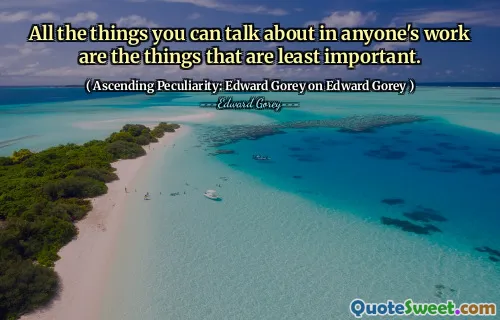Sometimes by a woodland stream he watched the water rush over the pebbled bed, its tiny modulations of bounce and flow. A woman's body was like that. If you watched it carefully enough you could see how it moved to the rhythm of the world, the deep rhythm, the music below the music, the truth below the truth. He believed in this hidden truth the way other men believed in God or love, believed that truth was in fact always hidden, that the apparent, the overt, was invariably a kind of lie.
The passage reflects the narrator's deep contemplation of nature and its connection to human experience. By watching a woodland stream, he observes how the water dances over the stones, drawing a parallel to the movement of a woman's body. This observation signifies his belief in the intricate and often unnoticed rhythms of life that connect all beings to a deeper truth, one that is not immediately visible but felt instinctively. He perceives this subtle truth as a profound, almost sacred force in the world.
This hidden truth, he suggests, is more significant than surface appearances, which he views as deceptive. For him, just as faith can encompass complex concepts like God or love, understanding this deeper layer of truth requires patience and attentive observation. The contrasts he draws between the seen and unseen emphasize a philosophical inquiry into reality, suggesting that one must look beyond the obvious to grasp the essence of existence and relationships.





